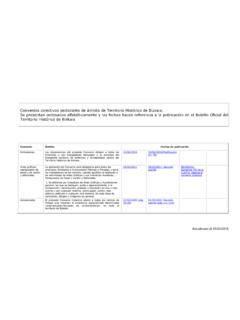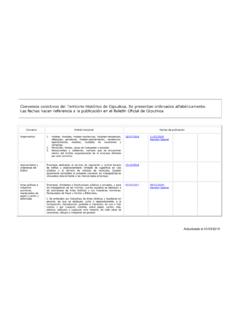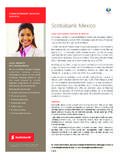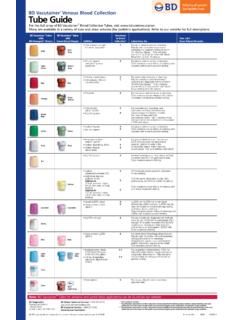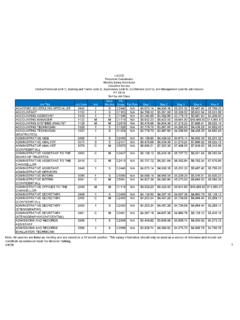Transcription of Social Protection for Rural Poverty Reduction
1 Rural TRANSFORMATIONS - Technical Papers Series #1 Social Protection Social Protection for Rural Poverty Reduction Rural TRANSFORMATIONS - Technical Papers Series #1 Social Protection Social Protection for Rural Poverty Reduction Stephen Devereux Centre for Social Protection , Institute of Development Studies, UK. FOOD AND AGRICULTURE ORGANIZATION OF THE UNITED NATIONS. ROME, 2016. Cover photo: FAO/Amos Gumulira The designations employed and the presentation of material in this information product do not imply the expression of any opinion whatsoever on the part of the Food and Agriculture Organization of the United Nations (FAO) concerning the legal or development status of any country, territory, city or area or of its authorities, or concerning the delimitation of its frontiers or boundaries. The mention of specific companies or products of manufacturers, whether or not these have been patented, does not imply that these have been endorsed or recommended by FAO in preference to others of a similar nature that are not mentioned.
2 The views expressed in this information product are those of the author(s) and do not necessarily reflect the views or policies of FAO. ISBN 978-92-5-109014-5. FAO, 2016. FAO encourages the use, reproduction and dissemination of material in this information product. Except where otherwise indicated, material may be copied, downloaded and printed for private study, research and teaching purposes, or for use in non-commercial products or services, provided that appropriate acknowledgement of FAO as the source and copyright holder is given and that FAO's endorsement of users' views, products or services is not implied in any way. All requests for translation and adaptation rights, and for resale and other commercial use rights should be made via or addressed to FAO information products are available on the FAO website ( ) and can be purchased through Contents ACKNOWLEDGMENTS V.
3 EXECUTIVE SUMMARY 1. INTRODUCTION 3. Social Protection FRAMEWORKS 5. CONCEPTUAL FRAMEWORKS 5. Social risk management 5. Transformative Social Protection 8. Adaptive Social Protection 10. Social Protection Floor 12. ANALYTICAL APPROACHES 13. Entitlement approach 13. Life-cycle approach 15. Agricultural livelihoods approach 16. Social Protection for food security 17. Graduation pathways 19. CONSOLIDATED CONCEPTUAL FRAMEWORK 21. INCOME AND FOOD SOURCES 23. POLICY OBJECTIVES 23. Promote livelihoods to reduce Poverty 24. Protect lives and livelihoods to reduce vulnerability 27. GUIDING PRINCIPLES 29. Gender sensitivity 29. Social inclusion 31. Environmental sustainability 31. Social Protection IMPACTS AND POLICY CHOICES 33. PROMOTING LIVELIHOODS TO REDUCE Poverty THROUGH Social Protection 33. Enhancing production-based income 33.
4 Enhancing livelihoods through Social transfers 42. PROTECTING LIVES AND LIVELIHOODS TO REDUCE VULNERABILITY THROUGH Social Protection 45. Protecting production-based income 45. Protecting labour-based income 46. Protecting against food price volatility 47. Protecting livelihoods through Social transfers 49. CONCLUSION 51. REFERENCES 55. Figures Figure 1. Transformative Social Protection 9. Figure 2. Adaptive Social Protection 10. Figure 3. The Social Protection Floor 13. Figure 4. Droughts, floods and entitlement failures 14. Figure 5. Key vulnerabilities across the life-cycle 16. Figure 6. Social Protection instruments for food security 18. Figure 7. The BRAC graduation model in Bangladesh 19. Figure 8. Consolidated framework of Social Protection for Rural Poverty Reduction 22. Figure 9. Alternative approaches to Rural Poverty Reduction 24.
5 Figure 10. Social Protection instruments to promote livelihoods and reduce Poverty 27. Figure 11. Social safety nets to mitigate vulnerability to shocks 28. Figure 12. Social Protection instruments to protect lives and livelihoods and reduce vulnerability 29. Figure 13. Trends in food production per capita, by region and in Africa 34. Figure 14. Farmers' access to markets, by region 36. Figure 15. Cash transfer income multipliers (LEWIE model) 44. Figure 16. The two branches of the Global Fund for Social Protection 50. Tables Table 1. A typology of risks 6. Table 2. Mechanisms for managing risk 7. Table 3. Broad policy strategies in Social Protection and agricultural growth 17. Table 4. Four pure' strategies to manage price instability 48. Boxes Box 1. Selected evidence on investment of Social transfers in agriculture 36.
6 Box 2. Asset transfers in Bangladesh and Ethiopia 37. Box 3. Case study: Purchase for Progress (P4P) in Mali 38. Box 4. Case study: A carpentry cooperative in Rural Rwanda 39. Box 5. Case study: Farmer-managed natural regeneration in Niger 41. Box 6. Case study: Insurance for contract farming in India 45. Box 7. Case study: Public grain reserves in West Africa 49. Acknowledgments The author acknowledges inputs kindly provided by Benjamin Davis, as well as helpful comments on earlier drafts of this paper by Rob Vos, Vito Cistulli and other colleagues at FAO. v Executive summary This paper reviews the major conceptual from climate change adaptation and disaster risk frameworks and analytical frameworks Reduction policies. for applying Social Protection in Rural and The Social Protection Floor emerged out of an agricultural contexts, proposes a synthesised ambition to extend coverage of Social security consolidated' framework, and reviews the schemes from urban, formal sector workers to evidence base on the impacts of Social Protection self-employed and informal sector workers, on agricultural production and Rural Poverty including smallholder farmers and agricultural Reduction .
7 Labourers. The Social Protection Floor brings a Four conceptual frameworks for Social Protection rights-based approach and an emphasis on the are reviewed. Social Risk Management provides a life-cycle to Social Protection policies. It is also useful framework in Rural contexts for classifying starting to grapple with Rural settings and food the range of idiosyncratic and covariant risks security concerns, making it increasingly relevant that individuals, households and communities to FAO's focus. face; analysing their impacts on livelihoods;. Five useful analytical approaches are also and identifying possible informal (private) and discussed. The entitlement approach formal (public) responses in three categories: disaggregates the sources of food into risk Reduction , risk mitigation, and risk coping production, labour and transfers, and analyses mechanisms.
8 Food insecurity as threats to any or all of these Transformative Social Protection introduces a sources. The life-cycle approach recognises that focus on Social justice and argues that Social vulnerability varies by gender and over the life- Protection should address the underlying cycle, and a comprehensive Social Protection drivers of vulnerability, not just the symptoms system needs to reflect these differences in of Poverty . It also highlights the linkages from needs. An agricultural livelihoods approach livelihood Protection ' to livelihood promotion', examines options for Social Protection from, which makes Social Protection a powerful toolkit independent of, for, and through agricultural for economic as well as Social development. growth, ranging from infrastructure development to crop insurance to input Adaptive Social Protection pays specific attention subsidies.
9 The HLPE report on Social Protection to the challenges posed by environmental shocks for Food Security organises Social Protection and stresses, especially those related to climate instruments into five clusters: Social assistance, change, which makes this framework especially income generation, twin-track' measures, risk relevant to agriculture and Rural development. management and risk Reduction . The graduation Adaptive Social Protection aims to climate-proof'. model delivers integrated packages of support, Rural economies and strengthen household and including assets and microfinance, with the community resilience, by drawing on insights objective of graduating' households out of 1. Social Protection for Rural Poverty Reduction extreme Poverty so they no longer need Social related education and health are accused of Protection .
10 Reinforcing sexist gender roles. Following this review of conceptual and The evidence base on the impacts of Social analytical approaches, a new consolidated Protection on agriculture and Rural development conceptual framework is presented that is growing rapidly, which gives more information illustrates how Social Protection can contribute for making informed policy choices. Given the to food security, Rural development and Poverty low productivity of smallholder agriculture, Reduction . Interventions are organised around especially in Africa, agricultural production has three sources of income and food (production, been promoted with general or targeted input labour, transfers). Social Protection policies subsidies, and with public works projects that and programmes are targeted at one or more construct and maintain roads and irrigation of the three income sources, in order to either infrastructure.










